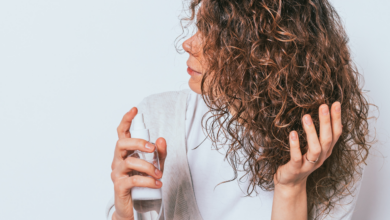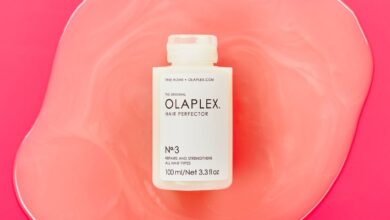
In “Shampoo, Condition, Repeat: Best Washing Techniques for Each Hair Type,” you’ll discover the ultimate guide to achieving luscious locks. From oily to dry hair, curly to straight, this article provides you with expert advice on the best washing techniques tailored to your specific hair type. Say goodbye to bad hair days as you learn how to properly shampoo, condition, and repeat for the healthiest and most beautiful hair of your dreams.
1. Shampooing Techniques for Different Hair Types
Whether you have dry, oily, normal, curly, fine, thick, color-treated, damaged, dandruff-prone, or a sensitive scalp, finding the right shampooing technique for your hair type is essential. By understanding the specific needs of your hair, you can ensure that your shampooing routine is tailored to provide the best care and results. Here are some effective shampooing techniques for different hair types:
1.1 Shampooing Techniques for Dry Hair
If you have dry hair, it’s important to use a moisturizing shampoo and avoid products that contain harsh sulfates. Start by wetting your hair thoroughly, and then apply a small amount of shampoo. Gently massage the shampoo into your scalp with your fingertips, focusing on the roots. Rinse the shampoo out thoroughly, ensuring that there is no residue left behind. Avoid using hot water, as it can further strip your hair of moisture. Finally, follow up with a nourishing conditioner to provide your dry hair with extra hydration.
1.2 Shampooing Techniques for Oily Hair
For those with oily hair, using a clarifying shampoo can help remove excess oil and buildup. Begin by wetting your hair and applying a small amount of clarifying shampoo. Massage it into your scalp, focusing on the roots, and then rinse thoroughly. It’s important to avoid over-washing your hair, as this can stimulate the production of even more oil. Limit shampooing to every other day or as needed. For oily hair, it’s also advisable to avoid heavy conditioners, as they can weigh your hair down and make it appear greasier.

1.3 Shampooing Techniques for Normal Hair
If you’re fortunate enough to have normal hair, you have the flexibility to use a wide range of shampoo products. Start by wetting your hair and applying a small amount of shampoo. Massage it into your scalp, working up a lather, and then rinse thoroughly. To maintain the balance of your hair, choose a conditioner that is suitable for your hair’s specific needs. Apply the conditioner from mid-length to ends, avoiding the roots, and rinse well.
1.4 Shampooing Techniques for Curly Hair
Curly hair requires special care to keep it hydrated and defined. Begin by wetting your hair and applying a sulfate-free shampoo specifically designed for curly hair. Gently massage your scalp, using your fingertips or a wide-toothed comb to avoid tangling or frizz. Rinse out the shampoo thoroughly. When applying conditioner, use a generous amount and distribute it evenly through your hair, focusing on the ends. For added moisture, consider using a deep conditioner or a leave-in conditioner to keep your curls looking their best.
1.5 Shampooing Techniques for Fine Hair
If you have fine hair, it’s important to choose lightweight shampoos and avoid heavy, oil-based products. Start by wetting your hair and applying a small amount of volumizing shampoo. Gently lather the shampoo into your scalp, being careful not to tangle or weigh down your hair. Rinse out the shampoo thoroughly. When it comes to conditioning fine hair, focus on the mid-length to ends, avoiding the roots to prevent further flattening. Choose a lightweight conditioner and rinse well for optimal results.
1.6 Shampooing Techniques for Thick Hair
Thick hair can benefit from a hydrating shampoo that adds moisture and reduces frizz. Begin by wetting your hair and applying a small amount of shampoo. Massage it into your scalp, working up a rich lather. Rinse out the shampoo thoroughly. When conditioning thick hair, focus on the ends to ensure they receive maximum hydration. Use a moisturizing conditioner and gently detangle your hair with a wide-toothed comb. Rinse well to avoid any product residue.
1.7 Shampooing Techniques for Color-Treated Hair
If you have color-treated hair, it’s important to use shampoos specifically formulated for colored hair. These shampoos are designed to protect your hair color and prevent fading. Start by wetting your hair and applying a small amount of color-safe shampoo. Gently massage it into your scalp, working up a rich lather, and then rinse thoroughly. Follow up with a color-safe conditioner, focusing on the ends. Leave the conditioner on for a minute or two before rinsing to provide extra moisture and protection to your color-treated locks.
1.8 Shampooing Techniques for Damaged Hair
Damaged hair requires gentle and nourishing care to restore its health and vitality. Begin by wetting your hair and applying a small amount of repairing shampoo. Massage it into your scalp, focusing on the roots, and then rinse thoroughly. Avoid using hot water, as it can further damage your hair. Follow up with a deep conditioning treatment or a repairing conditioner, focusing on the mid-length to ends. Leave the conditioner on for a few minutes before rinsing to allow the ingredients to penetrate and repair your damaged hair.
1.9 Shampooing Techniques for Dandruff-Prone Hair
If you struggle with dandruff, it’s important to use a shampoo specifically formulated to combat flakes and soothe the scalp. Begin by wetting your hair and applying a small amount of dandruff shampoo. Massage it into your scalp, focusing on the affected areas, and then rinse thoroughly. Repeat the process if necessary. To further address dandruff, use a conditioner designed for the scalp, avoiding the roots. Leave the conditioner on for a few minutes before rinsing to promote a healthy scalp and reduce flaking.
1.10 Shampooing Techniques for Sensitive Scalp
For those with a sensitive scalp, it’s important to use a gentle shampoo that soothes and nourishes without causing irritation. Begin by wetting your hair and applying a small amount of gentle shampoo. Massage it into your scalp using soft, circular motions, and then rinse thoroughly. Avoid using hot water, as it can exacerbate scalp sensitivity. When conditioning, choose a hypoallergenic conditioner that is free from harsh chemicals and fragrances. Apply the conditioner from mid-length to ends, avoiding the roots, and rinse well.
2. Conditioning Techniques for Different Hair Types
Once you’ve mastered the art of shampooing your hair based on its specific needs, it’s equally important to follow up with the right conditioning techniques. Conditioning helps to nourish, hydrate, and restore the proteins and oils that your hair needs to stay healthy and manageable. Here are some conditioning techniques for different hair types:
2.1 Conditioning Techniques for Dry Hair
If you have dry hair, it’s crucial to choose a conditioner that provides deep hydration. After shampooing, gently squeeze out the excess water from your hair. Apply a generous amount of conditioner from mid-length to ends, avoiding the roots. Leave the conditioner on for several minutes to allow it to penetrate your hair, and then rinse thoroughly with cool water. For extra hydration, consider using a leave-in conditioner or a hair mask once a week.
2.2 Conditioning Techniques for Oily Hair
For oily hair, it’s important to use a lightweight conditioner that won’t weigh your hair down or make it appear greasy. After shampooing, gently squeeze out any excess water from your hair. Apply a small amount of conditioner to the ends, avoiding the roots. Leave the conditioner on for a minute or two, and then rinse thoroughly with cool water. It’s advisable to avoid applying conditioner directly to your scalp, as it can contribute to oiliness.

2.3 Conditioning Techniques for Normal Hair
If you have normal hair, you have the flexibility to use a wide range of conditioners. After shampooing, gently squeeze out any excess water from your hair. Apply a moderate amount of conditioner from mid-length to ends, focusing on the areas that tend to be drier. Leave the conditioner on for a few minutes to allow it to work its magic, and then rinse thoroughly with cool water. For added benefits, consider using a deep conditioning treatment once a week.
2.4 Conditioning Techniques for Curly Hair
Curly hair can often be prone to dryness and frizz, requiring ample moisture and definition. After shampooing, gently squeeze out any excess water from your hair. Apply a generous amount of conditioner from mid-length to ends, focusing on the areas that tend to be drier or more frizzy. Use your fingers or a wide-toothed comb to distribute the conditioner evenly through your curls. Leave the conditioner on for a few minutes, and then rinse thoroughly with cool water. For additional hydration, consider using a leave-in conditioner or a curl cream.
2.5 Conditioning Techniques for Fine Hair
When conditioning fine hair, it’s important to choose lightweight formulas that won’t weigh your hair down. After shampooing, gently squeeze out any excess water from your hair. Apply a small amount of conditioner to the mid-length to ends, avoiding the roots. Leave the conditioner on for a minute or two, and then rinse thoroughly with cool water. It’s advisable to avoid heavy or oil-based conditioners, as they can make fine hair appear limp or greasy.
2.6 Conditioning Techniques for Thick Hair
Thick hair can benefit from a rich and nourishing conditioner to provide deep hydration. After shampooing, gently squeeze out any excess water from your hair. Apply a generous amount of conditioner from mid-length to ends, focusing on the areas that tend to be drier or more prone to frizz. Use your fingers or a wide-toothed comb to distribute the conditioner evenly through your hair. Leave the conditioner on for a few minutes to allow it to penetrate, and then rinse thoroughly with cool water.
2.7 Conditioning Techniques for Color-Treated Hair
For color-treated hair, it’s crucial to use a conditioner that helps maintain and protect your hair color. After shampooing, gently squeeze out any excess water from your hair. Apply a color-safe conditioner from mid-length to ends, focusing on the areas that tend to be drier or more damaged. Leave the conditioner on for a few minutes to allow it to provide extra moisture and protection to your color-treated locks. Rinse thoroughly with cool water for optimal results.
2.8 Conditioning Techniques for Damaged Hair
If you have damaged hair, it’s important to use a deep conditioning treatment to repair and nourish your locks. After shampooing, gently squeeze out any excess water from your hair. Apply a generous amount of deep conditioner from mid-length to ends, focusing on the areas that are particularly damaged or brittle. Use your fingers or a wide-toothed comb to evenly distribute the conditioner. Leave the conditioner on for a few minutes, or as directed on the product packaging, and then rinse thoroughly with cool water.
2.9 Conditioning Techniques for Dandruff-Prone Hair
To address dandruff and provide relief for your scalp, it’s advisable to use a conditioner designed for the scalp. After shampooing, gently squeeze out any excess water from your hair. Apply a small amount of scalp-soothing conditioner from mid-length to ends, avoiding the roots. Leave the conditioner on for a few minutes to allow it to nourish and calm your scalp. Rinse thoroughly with cool water to minimize flaking and irritation.
2.10 Conditioning Techniques for Sensitive Scalp
For individuals with a sensitive scalp, it’s important to choose a gentle and hypoallergenic conditioner to avoid irritation. After shampooing, gently squeeze out any excess water from your hair. Apply a small amount of conditioner from mid-length to ends, avoiding the roots. Leave the conditioner on for a minute or two, and then rinse thoroughly with cool water. It’s advisable to opt for conditioners that are free from harsh chemicals and fragrances to minimize any potential scalp reactions.
In conclusion, understanding your hair type and its specific needs is crucial for achieving and maintaining healthy, beautiful hair. With the right shampooing and conditioning techniques, tailored to your hair type, you can ensure that your hair receives the care it deserves. So grab your favorite shampoo and conditioner, and give your hair the pampering it needs. Shampoo, condition, and repeat for hair that looks and feels its best!

TRESEmmé Keratin Smooth Conditioner Review(Opens in a new browser tab)
Tresemmé Keratin Smooth Hair Oil Review(Opens in a new browser tab)




